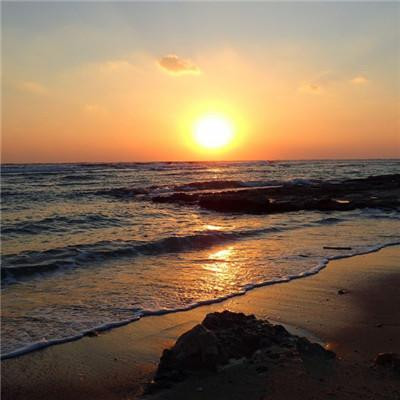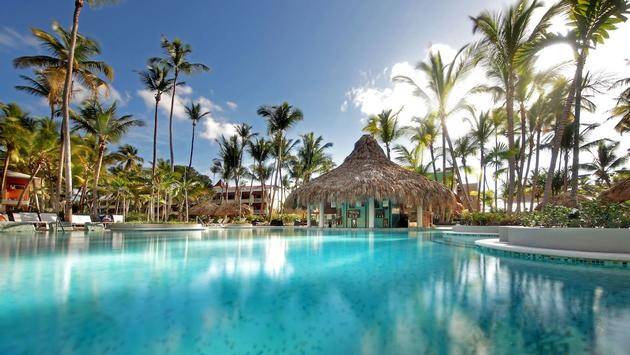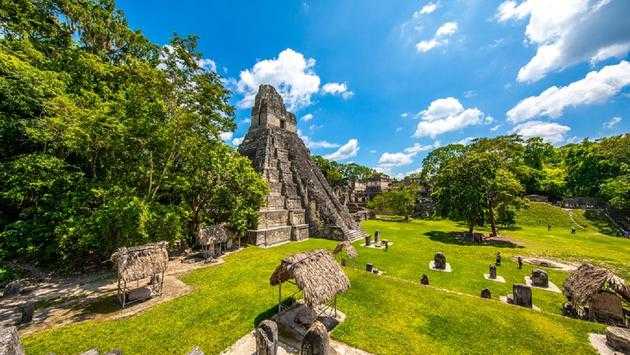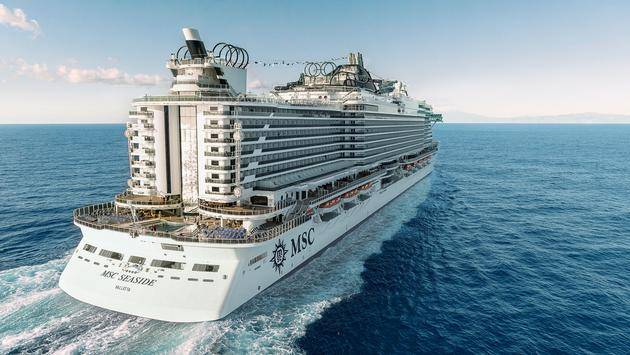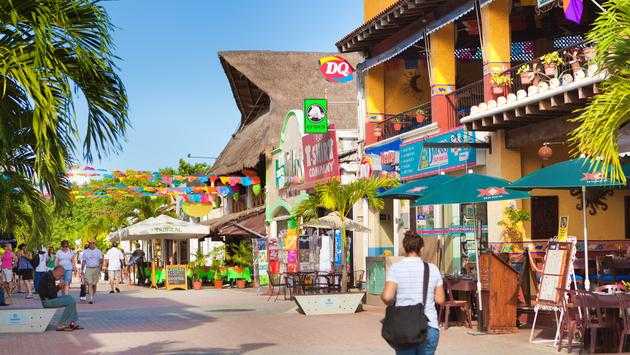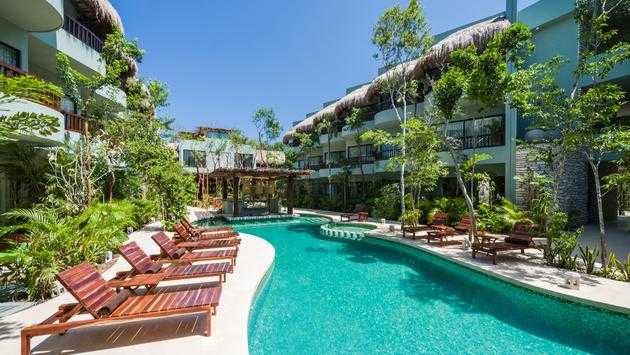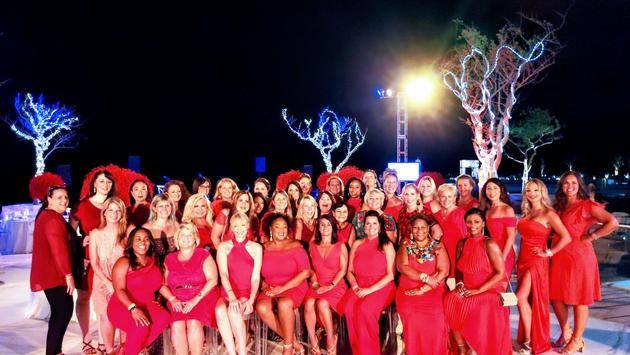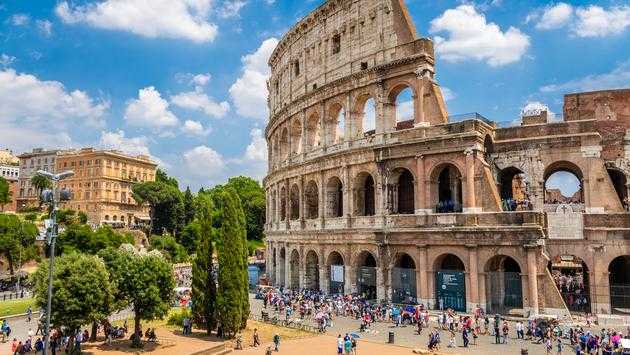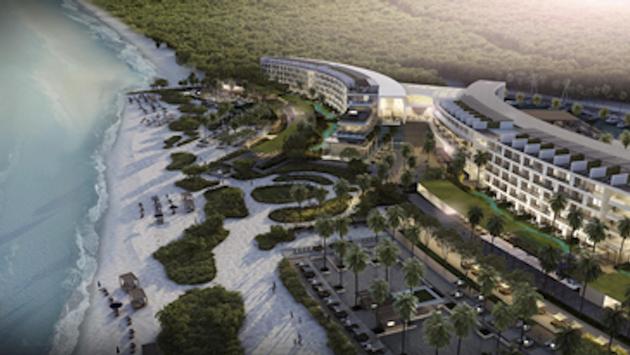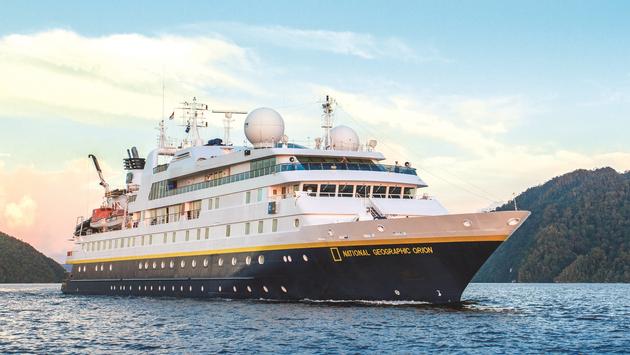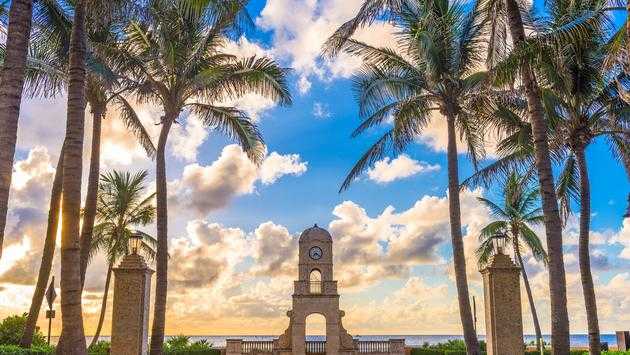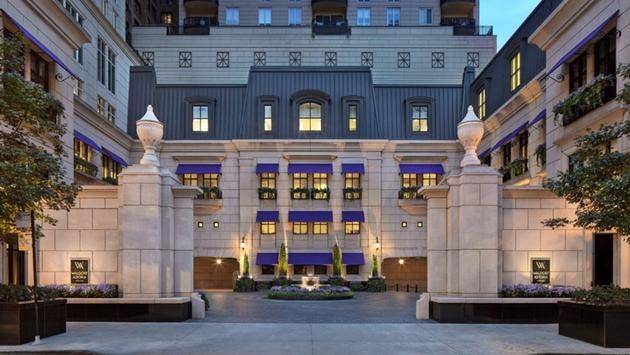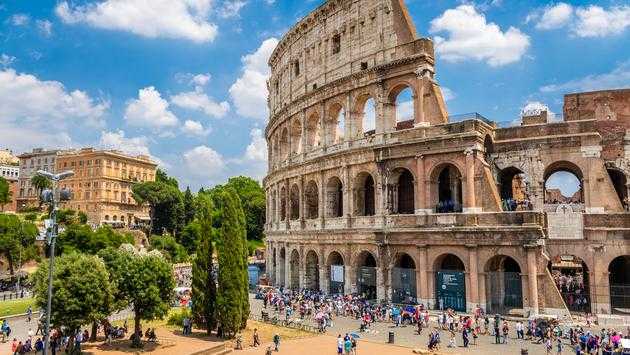Photos of northern Europe in early summer - a happy self organized tour of seven countries [Norway, Sweden, Denmark, Finland, E
Days: 14 days
Time: June
Per capita: 22000 yuan
With whom: husband and wife
Play: Humanities, cruise, photography, with the group, petty bourgeoisie
The author went to these places
Norway
Church of Saint Nicholas
House of three brothers
Gunpowder tower
Vilnius Cathedral
St. Anna's Church
Riga central market
Copenhagen
Viru Gate
Round tower
Old town of Tallinn
Blackhead brotherhood house
Albert Street
Latvian War Museum
vilnius university
history museum
Fromm
Oslo Opera House
Changdi Park
Royal Theatre
Frederick Church
Copenhagen City Hall Plaza
Copenhagen City Hall
Church of the Holy Spirit
King's new Plaza
Published on July 28, 2016 21:49
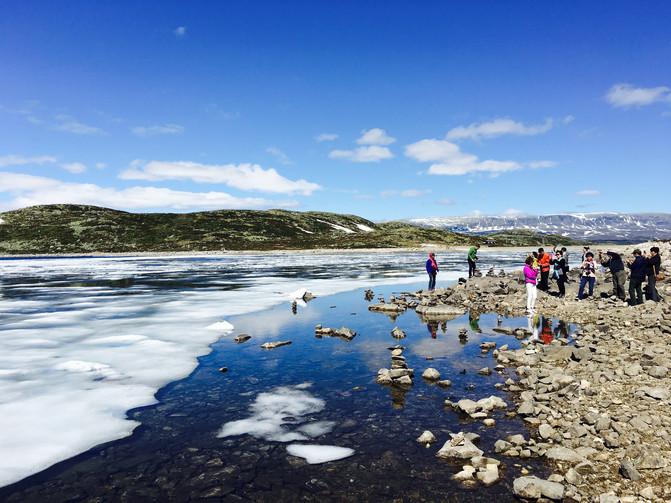
———————————————————————————————————————————
Write on the front
———————————————————————————————————————————
At the beginning of summer, the sun is rising, the earth is full of vitality, and the mood is as bright as the sun. On the second day after the college entrance examination in 2016, a group of old students packed their backpacks and flew to the north end of the earth for a long trip to northern Europe, a fairy tale country.
Tourism is not only a process of seeing scenery, but also a process of making friends, perceiving the world and purifying the soul.
We are a small group of 22 people. Most of our group members are old friends we met in our youth. They are of the same age and have similar interests and tastes. Under the call of the enthusiastic leaders, the group toured the four northern European countries (Norway, Sweden, Denmark, Finland) and the three Baltic countries (Estonia, Latvian, Lithuanian). We spent 14 happy days together, relived the beautiful youth and continued the friendship more than 40 years ago.
It's a trip to make friends and friends, and with my husband and wife hand in hand, it's self-evident that it's a happy experience of forgetting age.
The first time I took part in a group tour, I felt that it was different from the group tour I used to take part in
Travel agencies design tours according to our requirements and send tour guides to accompany us all the way. Because of mutual understanding and tolerance, there is no stumbling; Because we know each other, we all have a good time on the journey, singing, laughing, dancing, writing and writing poems. Even a reserved person like me forgets his age and is activated by his youth.
There are also some troubles in organizing a group, because it is not a mature route and the arrangement is not ideal. Some places have not even been to a tour guide before, so they often take some detours, which is hard. But these are not big problems compared with traveling with old friends.
Specific itinerary:
Day1 (6 / 11): Shanghai Pudong Airport Helsinki Airport Sibelius park. Finnish Airlines ay058 (a350-900) 9:20 / 14:20. Accommodation: rantasipi siuntio kglpyla Spa Hotel, Helsinki, add: lepopirtintie 80 02570 siuntio PUH, Tel. + 358 9 260 60 659
Day2 (6 / 12): Helsinki - Cross Sea Ferry - Tallinn - red church - Rock Church - white church - house of Lords square, Tallinn Hotel Rocca al mare, www.roccahotels.ee, Tel. + 372 664 5950
Day3 (6 / 13): Tallinn Riga Tallinn old town (upper and lower city) - Town Hall Square - St. Nicholas Church - house of three sisters - St. Olaf Church - tumupi Castle - Alexander Nevsky church. Hostel: Bellevue Park Hotel Riga, Tel. + 371 67 06 9000 www.hotelbellevue.lv
Day4 (6 / 14): Riga Vilnius Lundel palace Riga old town hall square black head house St. Peter's Church Riga house of three brothers Sweden gate gunpowder tower Lundel palace. Accommodation: Park Villa Hotel, Vilnius, Tel. + 370 5 2113356 www.parkville.lt
Day5 (6 / 15): Vilnius - castles in the water - zionia - Cross Hill - Riga - St. Peter and St. Paul's Church - thirty character Hill - Vilnius Cathedral - Vilnius old town - Dawn gate - St. Anna Church - castles in the water - Chateau de traque - Cross hill. Hostel: Bellevue Park Hotel Riga, Tel. + 371 67 06 9000 www.hotelbellevue.lvday6 (6 / 16): Riga - central market of Riga - Tallinn - cruise ship "romantic" of Tallinn - Stockholm. Hostel: the Romantika cruise ship
Day7 (6 / 17): Stockholm - City Hall - Concert Hall - vasa battleship Museum - Palace - Cathedral - Stockholm old town, hostel: Stockholm good morning hotels + hotel Hagersten by ligula, Tel: + 468 / 55632330 www.gmorninghotels.se
Day8 (6 / 18): Stockholm - karstad Lake - Oslo. Accommodation: Clarion Hotel & Congress Oslo Airport, Oslo, add: Hans gaardervei 152060 gardenmoen, Norway, Tel. + 47639494
Day9 (6 / 19): Oslo - Bear house - Snow Mountain and ice lake of hennafos - Gallo. Hostel: Thor Hotel vestlia, Tel. + 4732087200, add: bakestolvegen 81 3580 Geilo
Day10 (6 / 20): Gallo fjord District, fram town mountain landscape train (round trip) - Pine fjord Ferry (round trip) - Oslo, scenic spot: Pine Fjord, lodging: Oslo Clarion Hotel & Congress Oslo Airport, Tel: + 476 / 39494, add: Hans gaardervei 15, 2060 Gardermoen, Norway
Day11 (6 / 21): verland Sculpture Park in Oslo - homecollen ski jump - Viking Boat Museum - National Opera House - Oslo / DFDs cruise ship - Copenhagen, hostel: cruise ship, scenic spot: Hostel: DFDs cruise ship.
Day12 (6 / 22): Statue of the little mermaid in Copenhagen - fountain of the God of agriculture - Fort Merlin Palace - krenburg - Frederick Castle - Town Hall Square - Stroget pedestrian street. Good morning + Malmo, Tel + 4640 / 6728570, add: stadiongatan 21 217 62 Malmo Sweden
Day13 (6 / 23): Copenhagen Helsinki Finnish Airlines ay666 (A321) 13:20 / 15:55,
Day14 (6 / 24): Helsinki Shanghai Pudong Finnish Airlines ay057 17:20 / 7:10 + 1.
Scenic spots essence
@Suburban Helsinki, Finland
@White House in Helsinki, Finland
@Overlooking the ancient city of Tallinn in Estonia
@The palace of Lundel, Latvian
@Lithuanian Church of Saint Anna
@Water castle in Trakai, ancient capital of Lithuania
@Mirror Lake, Gallo, Norway
@Pine Fjord, Norway
@The pillar of life in the sculpture park in Holland, Oslo, Norway
@Danish hersingh's "krenburg" -- Hamlet Castle
Frederick castle, Copenhagen, Denmark
———————————————————————————————————————————
1、 Introduction
———————————————————————————————————————————
1.About visa and insurance
As it is a group tour, as long as the required materials are submitted to the travel agency on time. But now the problem of refugees in Europe has strengthened security. All tourists to northern Europe have to go to the relevant consulates to fingerprint and take photos. Venue: Shanghai Norwegian visa center, 3 / F, Jiushi business building, 213 Sichuan middle road, Huangpu District, Shanghai. The third floor of Jushi business building is basically the visa office of the Nordic embassy and consulate, in addition to Norway and Sweden. The waiting hall is not allowed to use mobile phones to surf the Internet or even make phone calls, but it can also bring small bags (which is more relaxed than visa to the US consulate). Of course, you can't bring anything when you enter the inquiry room.
I have noticed that the photos taken here are used on the visa page of the passport, but I don't know where the two recent photos I handed in in advance within six months are used.
【Tips】
Schengen Visa (Shanghai consulate area: Jiangsu, Zhejiang, Shanghai and Anhui)
Working days for signature: after appointment, the review period of the consulate is 5-10 working days.
Now Europe has a lot of troubles because of the refugee problem, and Northern Europe is relatively safe. But travel, insurance is indispensable. The basic insurance purchased by the travel agency has been included in the journey, but each person still bought another insurance from Goldman Sachs insurance company at his own expense of 160 yuan. Our daughter-in-law bought Allianz Insurance (200 yuan / share), the largest insurance company in Europe, for us.
2.About transportation
We have experienced a full set of sea, land and air transportation this time.
All flights from Shanghai to northern Europe are direct flights, with a total flight distance of 7700 km from Pudong, Shanghai to Helsinki, Finland. The actual flight time is 9 hours and 52 minutes. The return flight is from Copenhagen to Helsinki, and the connecting flight is to Shanghai Pudong Airport, which is also Finnish airlines. The actual flight time of the first leg of the return journey is about 2 hours, and the actual flight time from Helsinki to Shanghai Pudong is 8 hours and 35 minutes. Finnish air's plane is not very big, but the facilities are good. All kinds of drinks and alcoholic drinks, Chinese and Western food are available on board. Among them, blueberry juice is very good, especially impressive.
One thing was a bit strange. One hour after the plane took off, the radio suddenly said that 20-25 rows were available, and the passengers needed could buy it for 60 euro. At that time, our seats were more than 50 rows. On the return trip, we were arranged in row 16, economy class +. The stewardess said that such seats are usually bought for 65 euro. We are lucky to be arranged for free. Looking back, we can see that the group members who have been assigned such good seats all have long flight records. I don't know if it's a reward. Is it a coincidence?
There are three sections of waterway in this trip, including Tallinn to Stockholm and Oslo to Copenhagen. These two sections take more than ten hours to spend the night on board. There is also a section from Helsinki to Tallinn in just over two hours, belonging to the nature of ferry. Three times, they all took a cruise ship with more than 3000 people. All kinds of facilities on the cruise ship were complete, but the room was a little small.
Other land travel is arranged by the local pick-up agency. The Nordic bus is in excellent condition. 23 of us (plus Tour Guides) successively took Mercedes Benz, man and other buses with more than 50 seats. In Copenhagen, we even took the double deck bus. Nordic drivers are also polite and professional. The experience of this ride is very pleasant in retrospect.
3.About Nordic weather and others
As northern Europe is located at the junction of north temperate zone and north frigid zone, winter is relatively long. June to August is the best travel time of the year, and the weather is not hot in summer, the general temperature is 10-22 degrees Celsius, as long as you bring a long sleeve shirt or T-shirt. Even if you go to the fjords, it's enough to add a jacket. Sunny day light is relatively strong, recommended anti frost index (SPF) 30, sunglasses are also necessary. At this time, the weather changes greatly, and there are often showers. It is recommended to take an umbrella with you (but you can't take the umbrella with you when you go through the security check, you must put it in the checked luggage).
4.On the tax rebate of shopping in northern Europe
In northern Europe, the tax refund procedures are very simple. If you meet the conditions for tax refund when shopping, the salesperson will print a tax refund form with the invoice, which contains the tax refund rate of this shopping and the total amount of tax refund, so that you can understand immediately. Unlike the Western European tax rebate form, there is only a tax rebate rate, and you have to calculate how much you can refund. Since Norway is not an EU country, it is equivalent to leaving the country when you arrive in Norway. Therefore, goods purchased by other Nordic countries can be refunded in Norway. Of course, they can also be refunded at the airport customs before returning home. But the reverse is not true. If you buy goods in Norway, you can only get a refund at the last stop of leaving northern Europe.
5.About food and shopping in northern Europe
Seafood, roe, foie gras, ham, beef, as well as a variety of cheese, ice cream, desserts are the characteristics of Nordic food. Because the air there is fresh, the grassland is ecological, the lake is clean, the cattle and sheep there have bright fur and delicious meat. Northern Europe is an island country, and the deep-sea fish in the Baltic Sea and Atlantic Ocean is their specialty. There are blueberries from Finland and other places, as well as health products and processed foods made from blueberries. Compared with the expensive blueberry capsules, I would like to recommend blueberry powder, dehydrated blueberries and other original blueberry processed foods, which are both delicious and healthy. Of course, Nordic fish oil and biological products extracted from various deep-sea fish are also very popular with Chinese tourists.
As our restaurant is a group meal with six dishes and one soup, there are few Chinese restaurants in the four Nordic countries and the three Baltic countries. Basically, we eat in the chain Beijing Hotel, which is not recommended. The two time is the morning and evening buffet on cruise ships. The variety is very rich, the food quality is very good, and the local red and Baijiu are served.
@Chinese restaurant, the appearance of "East Asian restaurant" opened by Beijing people
6.About accommodation in northern Europe
From the hotel I stayed in, I initially realized the "simplicity" of northern Europe. Although we live in four-star hotels, the facilities are very different from those in Western Europe. Most of the hotel rooms are not very big. There is no refrigerator, coffee pot, kettle or bottled drinking water, not to mention toiletries, slippers, or even hair dryer. The towels in the bathroom are as simple as two large and medium-sized towels. Besides the basic living function, most of the furniture in the room does not have stools for carrying suitcases.
I am quite satisfied that the green environment around these hotels is very good, and some of them are next to the forest.
The most satisfying of all the hotels is the Galois Riya resort, on the Bank of the ski resort.
Nordic voltage and we are the same, but the socket hole is round, it is recommended to bring round hole socket.
Except for the cruise on the 6th and 11th day, the schematic diagram of staying in the hotel at other times is as follows:
Day1: rantasipi siuntio kglpyla Spa Hotel, Helsinki, this is a hotel with spa.
Day2:22612Hotel Rocca al Mare
http://hotels.ctrip.com/international/3632185.html
Day3/5:里加 Bellevue park Hotel Riga,
Day4: Park Villa Hotel, Vilnius, Lithuania,
Day6: the romantic cruise ship
Day7: g00d morning + hotel Hagersten
http://hotels.ctrip.com/international/2108801.html
Day8/10:奥斯陆Clarion Hotel & Congress Oslo Airport
Day9: thong Hotel vestlia
Day 11: DFDs www.dfdsseaways.cn
Day12: 瑞典Good Morning+Malmo
——————————————————————————————————————————Travel notes
———————————————————————————————————————————
【Day1】
Northern Europe is no stranger to us. The stories of kings, knights, princes and princesses in Andersen's fairy tales are read from childhood. Northern Europe is very far away from us. In the past, the flying distance of 7000 or 8000 kilometers, the land and water routes of tens of thousands of kilometers were out of reach.
Today, we boarded the Airbus A320 of Finnish airlines, set out from Pudong, Shanghai, and went northwest through Mongolia and Russia. After 9 hours and 52 minutes, we flew over 7700 km and finally arrived over Helsinki, the capital of Finland. Looking down through the porthole of the plane, the beautiful blue sky and white clouds are lush, and the small brown red roofs are dotted with them. Isn't Finland Santa's hometown? Isn't it a fairy tale world of ice and snow?
Oh, forget to explain that we came here in the sunny summer.
Finland, known as the "land of thousands of lakes", has a coastline of 1100 kilometers, about 179000 islands and 188000 lakes. As one third of the land in the Arctic Circle, it has a long and cold winter and a short and mild summer.
Finland's per capita forest area is 5 hectares. No wonder it's not rare to come to Finland with green eyes.
Although Finland is Santa's hometown, it has been ruled by Sweden for more than 600 years and Russia for more than 100 years since the 12th century. It was not until the October Revolution of 1917 that the independence of Russia was achieved, so many urban buildings in Finland retain traces of Sweden and Russia.
In addition, because Sweden ruled Finland through peaceful infiltration, Finland did not go through a major war, so the urban and rural landscape of Finland is well preserved.
Sibelius Park
As soon as we got out of the airport, the bus drove us directly to Sibelius park.
Sibelius park is named after Sibelius, the father of Finnish music. The park is not big. There is no gate or ticket, but it is a famous scenic spot in Helsinki. Tourists from all over Finland and all over the world will come here to visit musicians.
From composing at the age of 9 to his death at the age of 92, Sibelius composed seven symphonies and a large number of solo, violin, piano, opera and dance drama in his life. Among them, the most famous is the symphony poem "Ode to Finland", which describes the patriotic enthusiasm of the Finnish people, and is known as the second National Anthem of Finland. He and Beethoven, Tchaikovsky, Strauss, Schumann and other music masters juxtaposed, well-known in the world music world.
Walking into the park, I saw a large open grassland under the lush forest. Dozens of birds bigger than wild ducks were leisurely foraging on the grassland. Visitors were not afraid to see them. Across the grass is a flat land about the size of two basketball courts. In front of the flat, there are two polished silver white stainless steel sculptures, shining in the sun, waiting for the visitors.
This is the famous monument and head sculpture of Sibelius.
The tour guide asked the whole group to take photos, saying that all the essence of the park could be recorded. We also left the first group photo of the trip.
This huge stainless steel pipe assembly is the Sibelius monument. It is a surreal image of the performance of the shape, surrounded by a green forest behind, highlighting its strong modern flavor. People can imagine that it is like this dense forest, which gives Sibelius infinite creative inspiration; It can also be imagined that the 600 odd stainless steel pipes with different heights are composed of a giant pipe organ.
It is said that when the wind in the Baltic Sea is strong enough, this "giant pipe organ" will make a wonderful sound, playing the master's music with the power of nature.
On the left side of the stainless steel tube monument, the metal head of Sibelius is inlaid on the crimson rock.
These two monuments are the works of the famous Finnish female sculptor hirtunin. After the completion of the steel pipe monument in 1922, many Finns couldn't understand it because the shape of the monument was too advanced. The government asked her to complete another head portrait of a composer.
Although the female sculptor thinks that the steel tube statue is enough to reflect the contribution of Sibelius, it took her six years to complete the creation of the head statue on the 10th anniversary of Sibelius' death in 1967, and its small copy was permanently displayed in the United Nations building.
Walking through the woods behind the monument, in front of it is the sparkling Baltic Sea. Leaning on the bench and listening to the sea breeze, you can feel the beauty of the musician's inspiration when facing the sea.
【Day2】
Today is a one-day tour of Helsinki.
Facing the Baltic Sea, Helsinki is a city of classical romance and modern civilization, known as "white city in the north". Its famous scenic spots are three churches (red church, white church, Rock Church) and Sibelius Park, which we visited yesterday.
The red church
The largest Orthodox Church in northern Europe, built in 1868. Because of the red exterior wall of the church, it is commonly known as the "red church".
Under the blue sky, the church's 13 red brick spires of different sizes are very eye-catching, highlighting a strong Russian color between the urban contours of Helsinki.
Inside the church was buried the Finnish national hero General Mahan, who led the Finnish army to resist the Russian invasion.
The other end of the red church
The golden walls of the church are brilliant, and the elaborate vaults and granite pillars are particularly attractive. In the front of the church, on the wall behind the altar, there are images of Christ and murals of 12 disciples. The paintings inside the church were all finished by Russian painters, which completely retained the artistic style of the traditional Orthodox Church.
At this time, the believers were worshiping. In order not to disturb them, we entered quietly. I didn't know that photography was not allowed in the church. The doorman quickly pressed the shutter to leave a picture of the church.
Temppeliaukio Rock Church
Leave red church and head for Helsinki's modern and fashionable rock church.
This is the only church built in rock in the world. It is famous for its novel and ingenious design. It is said that when the construction started, it attracted architects and designers from all walks of life in Europe to see how to dig a church in a whole rock. It was completed in 1969 and is a masterpiece of the architects, the somalani brothers.
The most peculiar originality of rock church lies in its ingenious use of a whole huge rock in the natural landscape to excavate from top to bottom like a well, and design the concave place as a church. The church has no spire and bell tower, only a light blue copper dome with a diameter of more than 20 meters is exposed on the top of the rock. The whole church is as interesting as a flying saucer. It is one of the masterpieces of modern architecture in Finland.
The rocks around the church can be bought tickets from the internal stairs for visitors to climb and rest.
The usual opening hours of the church are 10:00-20:00. Today is Sunday, 11:00; 45. We arrived earlier and were the first group of tourists waiting for the door to open.
The entrance gate of the church is designed in a very low-key way. The tunnel shaped passage is made of rock and cement. Entering the church is like entering a cave.
But once you enter the church, it immediately gives you a feeling of sudden brightness. The dome of the church is made of copper strips, with a diameter of 24 meters. The connection between the dome and the rock wall is 100 radial beams and columns, which are like open umbrellas. Between the umbrellas are inlaid with transparent glass, and light flows from the umbrellas to the church. The whole space is transparent and open, and can accommodate 940 people at the same time.
The dome with copper wires is like a grand piano. When former President Jiang Zemin visited Finland, he once played the piano song Jasmine here.
It is worth mentioning that the circular church is also a natural sound effect equipment. Under the echo of the rock wall, the church sound has a wonderful effect, which is amazing. No wonder people always say that the wonder of rock church lies not only in watching, but also in listening. Helsinki citizens choose to hold weddings here, hold small bands to play, unaccompanied chorus concerts and so on.
The church would have been more like an auditorium if it had not been for the central platform in front of it and the striking organ on the right wall.
Unfortunately, our time in church is too short. It would be perfect if we could wait for the choir to appear.
In the central area of the church, there is a baptism altar, which is also very unique. Two granite stones are placed on the copper baptism basin.
Helsinki Cathedral white church
Helsinki Cathedral, located in the square of the house of Lords, is a Protestant Lutheran Church with no Jesus on its cross. It is the highest, most magnificent and holy church in Helsinki and the largest church in northern Europe.
The main body of the ivory church supported by Greek pillars and the bell tower with light green bronze dome constitute the distinctive features of Helsinki Cathedral. Compared with the "red church" of uspersky Cathedral, it is called "white church". Its magnificent momentum and exquisite structure make it a classic in the history of Finnish Architecture and a landmark in Helsinki.
Into the church, is also the main tone of white. Without the exquisite carving on the four walls of the general church, it looks very simple and simple.
Overlooking the house of Lords square from the platform outside the White Chapel gate: the cabinet building and the University of Helsinki are on the East and west sides respectively, and the presidential palace, the Supreme Court and the city hall are not far from the south.
The bronze statue of Czar Alexander II, built in 1894, although Finland has got rid of Russian rule, but the Finns respect history and have not destroyed the former appearance of the ruler.
[statue of Amanda]
In the center of the street not far from the White Chapel, a bronze statue of a naked girl in a circular fountain is very eye-catching. The girl faces the sea, holds her cheek in one hand, and looks at the Gulf of Finland quietly. This is the statue of Amanda, known as the "goddess of the sea" and "daughter of the Baltic Sea".
This statue is the famous Finnish sculptor vile vargren's successful sculpture of Amanda in this century, with a Finnish girl studying in Paris as the model. It is rich in the author's deep attachment to the motherland. Now this bronze statue has become a symbol of Helsinki.
Amanda fountain is always a paradise for children to play.
There is a small concert on the other side of the square.
Helsinki streetscape, a lot of people go out on Sunday.
A one-day tour of Helsinki is in a hurry. At 4:30 p.m., we are going to take a ferry across the Gulf of Finland to Tallinn, the capital of Estonia, a Baltic country.
Looking back at Helsinki's impression, I can't forget three churches with different styles. The red brick red church is the largest Orthodox Church in northern Europe, while the Russian population in Finland accounts for only 1%; The white church with white outer wall and light green arched roof is a Lutheran Protestant church, which is the standard building of Helsinki base; The rock church, built on the natural rocks along the road and shaped like a flying saucer, was built in the 1990s. The three churches are not only of different architectural styles, but also of different religious cultures. However, they can coexist harmoniously and become famous scenic spots in Helsinki. Hehe, this is Finnish culture. Finns have extraordinary patience and feelings.
Is this a ferry? It's a cruise ship. In the evening, when we took this "superstar" cruise ship across the Gulf of Finland to Tallinn, the capital of Estonia, we had an unexpected surprise.
Because the journey is only two hours, although it is a 3000 passenger cruise ship, it can only be called a "ferry" ship in the Baltic Sea.
But the facilities on the cruise ship are very rich and complete, including music, performances, shops, bars, even small meeting rooms and rest rooms where you can sleep.
Shops on ferry
bar
This is a conference room. I think some companies are really efficient. They even have time to ferry by boat. They have a meeting on board.
Arrive at Tallinn.
【Day3】
Starting today, we are going to spend four days touring the three small countries along the Baltic Sea - Estonia, Latvian and Lithuanian.
These three countries were all Soviet republics and declared independence in 1990.
The first to visit is Estonia, the only one of the three countries to join the euro zone.
In fact, this country has a very close relationship with northern Europe. It was invaded by European powers in history and was occupied and ruled by Prussia, Denmark, Sweden, Poland and Germany. Since 1710, it has been ruled by Tsarist Russia for more than 200 years. So far, it seems that the "Russian flavor" is still very strong. Many people like Russia can be seen on the street.
The forest coverage rate of Estonia is 47%. Although the country is not rich, its ecological environment is absolutely first-class.
Tallinn, which we live in, was built in 1248 during the reign of the kingdom of Denmark. In Estonian, Tallinn means "city of Danes", because Danes built this city at that time. After the restoration of independence in 1991, Tallinn became the capital of the Republic of Estonia. It was across the sea from Helsinki, the capital of Finland. In history, Tallinn was once a transportation hub connecting central and Eastern Europe with southern and Northern Europe, known as "the crossroads of Europe". With a total population of less than 1.3 million, half of Estonia lives in Tallinn, which is surrounded by the sea on three sides and dotted with lakes and islands. It is the only city in northern Europe that maintains the appearance and style of the middle ages
Coming to Estonia is like entering a fairy tale kingdom, walking in this seaside country, experiencing the integration of the middle ages and the modern.
Morning in Tallinn
The viru gates, built in the 14th century, is also known as the gate of Estonia. It is one of the main entrances to the old city. It is composed of two red topped round towers that stand opposite each other. Although the gates are mottled and dilapidated, they are still majestic even today.
Since the old town of Tallinn was listed as a world cultural heritage by UNESCO in 1997, the government of Tallinn has carried out continuous restoration of the old town. Today, we happen to encounter the road under the gate being repaired.
Tallinn old city is divided into upper city and lower city. The upper City, built on the tombia mountain, is the gathering place of upper class society, religious class and feudal dignitaries, while the lower city, as its name suggests, is the residence of merchants and handicraftsmen.
Stepping into the upper City, the first thing you can see is the shining and magnificent Alexandria Nevsky church with five Turquoise onion roofs. It is the largest and most magnificent orthodox domed Church in Tallinn, and a product of the reign of Czar Alexander III. it was built at the end of the 19th century.
The church is resplendent and luxurious. But it's a pity that I'm not allowed to take photos. This one I captured before I came in can be regarded as a glimpse of the leopard.
The pink baroque palace opposite Alexander Nevsky church is a wing of tombia castle, the center of Estonian power, which was built in 1227-1229. Now it is the Estonian parliament building.
The water tower like building behind the Estonian parliament building is the Hermann tower, 46 meters high. The national flag flying above it is an important symbol of the country's status. In 1989, the Soviet flag on the Hermann tower was replaced by the Estonian blue, black and white flag, which became an important symbol of the success of the Estonian independence movement.
St. Nicholas' church and museum is a standard building in the tower forest. The towering spire is the most prominent building in the ancient city.
There are so many churches, towers and castles in the old city that you can't remember their names. You are deeply attracted by the ancient buildings from the 13th to 15th century. You like their Athens and simplicity. Choose a few representative photos to post for the moment.
This is the former residence of some celebrities. The bronze plate at the door says the date of their residence. It is still in good condition.
The strange statues of elves beside the shops in the old city are very attractive to visitors. Look, this girl is taking a picture with Tongniu excitedly. But I thought it was a rat until I saw the sign of roast steak in the shop window next door.
This is like a scale, isn't it?
Estonians are very friendly to China. When they see us passing by, they immediately raise their glasses to greet us. They all say in Chinese: Hello!
A statue of voloemar panso, the first president of the Estonian Academy of music and drama, is on the street.
Walking on the long stone road, as if time travel, back to the middle ages.
The ancient city wall of Tallinn was built by the Germanic people. It stretches for two kilometers and is still well preserved.
Climbing up the ancient city wall along the slope road, overlooking the ancient city of talin, I can't help but be shocked by its gorgeous.
The red umbrella shaped defense tower under the green trees and the red roof are in row. The towering tower in the complex is St. Olaf's Cathedral. In the distance, the Tallinn balloon is rising, and the cruise ship to Helsinki, Finland is moored on the blue surface of the Baltic Sea in front of it... This peaceful scene highlights the extraordinary beauty of Tallinn.
Back, the sound of sweet music from the streets from time to time. We are very happy to see Chinese people playing and singing familiar Chinese songs such as "Jasmine".
Along the way, we are filled with a strong artistic atmosphere.
As the two played the National Anthem of China, the group members could not help singing: get up, people who do not want to be slaves... The voice of the East suddenly sounded on the land of northeast Europe.
From this path called luhike jalg, you can go straight down to the lower city. There is also a road from the lower urban area to the upper urban area, called pikk jalg. I really admire the humor and benefits of Tallinn people.
Now you can see the road paved with ancient pebbles, which is the long leg street that can walk up from the lower urban area. Long leg street is deep and quiet, with high stone walls on both sides, full of historical vicissitudes. There are artists selling books and paintings or performing some local elves to attract passers-by.
The center of Xiacheng District is the town hall square, where there are many tourists.
There are many cafes around the square. Tired of walking, you can sit down and have a rest, have a cup of coffee or drink, chat and have a look at the surrounding medieval buildings and visitors from all over the world. It's very enjoyable.
On the square stands an octahedral prism tower municipal building. On the top of the tower stands the statue of the patron saint of Thomas, which is the symbol of Tallinn city.
The northeast corner of the square, the most classical pharmacy in the world, is nearly 600 years old.
The beauty is waiting for the tired tourists, but the price of her tricycle is not cheap.
There are still carriages in the old city. Look how beautiful the beautiful coachman is!
The coffee shop on the street corner is elegant and quiet.
[blackhead brotherhood house]
Blackhead brotherhood is a single merchant guild on the Baltic coast in the middle ages. It was founded by German and dutch businessmen and sailors in real estate. They revered St. Mauritius as the patron saint (the symbol is the head of African moors). This building represents the Renaissance architecture built by the Dutch, with many classic decorations and murals. The main entrance is Tallinn's most eye-catching door. Built in 1640, the interior of the building is neoclassical.
House of three sisters
The three conjoined buildings on pike Street still retain the architectural structure of the 14th century. There are three styles of the three buildings, including almost all the styles of the buildings in the old town of Tallinn: the "sister" who imitates the Bohemian style, the "second sister" who advocates classic charm, and the "elder sister" who looks sophisticated. Now the three sisters house has been transformed into a five-star hotel with ancient history and strong charm. When the queen of England and the emperor of Japan visited, they appointed to stay here.
Interestingly, the three sisters' house has only one gate in and out, in the first big sister's house.
From the house of the three sisters, at the end of pike street is the great coastal gate, which is now the Estonian Maritime Museum.
【Day4】
Visit Latvian. This is the third country of our trip.
Riga is the capital of Latvian and the largest city among the three Baltic States. Because it is located in the intersection of Western and Eastern Europe, Russia and Scandinavia, its port has important strategic significance and very distinctive, known as "the beating heart of the Baltic Sea" and "Paris on the north side of Riga". After the reform and opening up, Shanghai used the experience of Riga free port for reference when building Shanghai port. Riga joined the Hanseatic League in 1282. For hundreds of years, the trade connection has fully integrated the multi cultures of Western Europe and Russia, becoming a multi-cultural gathering place. In 2014, Riga was selected as the European cultural capital. In Riga, you can see not only the beautiful and exquisite old city, but also the architecture with the most preserved Art Nouveau movement in the world.
"New art architecture" prevailed in the late 19th century and early 20th century. Its style tends to be "long, sensitive and curved lines, like seaweed and vines". It is natural, smooth and graceful. It is an aesthetic architectural decoration school.
The ecological environment in Riga is also good. This is the forest and grassland beside our residence.
This "Art Nouveau building city" has 800 art nouveau buildings. The gorgeous beauty of its urban architecture makes every visitor who first meets it marvel. According to the comments of UNESCO on the world cultural heritage in Riga, Riga's architecture of the "new art era" style is the best in Europe in terms of quantity and quality.
Although Albert Street is not long, it is a collection of art nouveau buildings developed at the end of the 19th century. It is not only unique in Latvian, but also the most complete "art nouveau buildings" group among the similar buildings in Europe.
The door side, lintel, window top and the wall between floors of the building are covered with a wide range of reliefs. Many of them are familiar with the heads, gods, Sphinx and sheepskin of ancient Greek mythological figures, as well as birds and animals, flowers and a variety of patterns. They are delicate, natural, beautiful, coherent and thought-provoking.
Here, the perfect combination of art and technology, from the design, material selection, the exquisite carving of the external wall, through the smooth and comfortable line changes, with complex procedural combination, expresses a kind of "return to nature" romantic style of the times.
Animal spirit sculpture in front of building
According to the bronze inscription, the owner of the statue is the mayor of Riga from 1901 to 1012. His reign was the age of the prevalence of new art architecture. It is speculated that he must have contributed to the development of new art architecture.
Russian Embassy in Riga
The house is very special. On the dark brown roof stands a cat with its tail cocked high. It turned out to be the famous cat house.
There is a popular story about this house: the owner of the cat house was once a very rich German businessman, but he was refused to join the prestigious "grand gilt" guild due to his improper behavior. Indignant, he built the mansion opposite to the guild, and put two black cats on the top of the towers on both sides of the house. What's more, he aimed the cat's back court at the "house of great gilt" to express his dissatisfaction with the guild in such an insulting manner. This practice of course led to a strong protest from the guild. After the intervention of the court, the dispute was mediated: the guild and the owner of the cat house reached an agreement to retain the building, but changed the orientation of the cat's tail and turned the cat's head to the guild.
It turns out that it's the same all over the world: money is willfulness.
Now, the dispute at that time has become history, but it left this unique building for later generations.
European banks
When you come to Riga's old city hall square, the Russian style here is more intense. A trinity marble statue of the Soviet Red Army Liberation Tallinn monument stands high on one side of the square.
[Riga City Hall Square] built in the 13th century, it is the oldest square in Latvian. The statue of Roland, the central statue of the square, represents the freedom and independence of the judiciary and the city in the middle ages, and is regarded as the patron saint of Commerce. The magnificent building behind him is the famous blackhead brothers house, which used to be the meeting place of the blackhead society of the Baltic single chamber of Commerce, and now is the Riga Museum.
Did you know that the Christmas tree originated in Riga, and it has something to do with blackheads. Specifically speaking, blackheads will emerge. On Christmas day in 1667, the black head club's diamond kings got drunk, cut down a tree, pulled it to the square and set it on fire. Since then, the Christmas tree has become a tradition to celebrate Christmas. At first, the Christmas tree was set on fire. Later, because it was dangerous to play with fire, it was decorated with colored lights, and toys and gifts were placed under the tree.
The blackhead brothers house is also a 14th century building. It was destroyed during World War II and rebuilt during the 800th anniversary of the founding of Riga from 1996 to 2000. The exterior of this building is exquisite, elegant and resplendent. It gives people a deep shock. I wonder how magnificent the interior is! It's a pity that the interior decoration is not open now, which makes the tourists feel sorry to leave.
The Gothic building with high spires is St. Peter's church, one of the oldest churches in the Baltic Sea. The church was built in the 13th century, while the Baroque bell tower was built in 1690, which was once the tallest wooden church bell tower in the world at that time. The fate of this clock tower is bumpy. It has been burned, knocked down, and even the top of the tower has fallen down. In 1721, the church was on fire. Peter the great himself directed the fire fighting. During the Second World War, the church was destroyed by the German army. In 1973, it was restored and changed into a metal structure. The restored Church is 123.25 meters high, which is the best place to overlook Riga. It's a pity that we don't have time to climb the bell tower. We can only overlook its charm.
The open-air cafe on the corner of the square, the chair with rose red cushion is very warm.
Tomsky church, also known as dome Cathedral, was first built in 1211. It took Teutons 500 years to build it. At that time, it was the largest church in the Baltic Sea. Its internal collection was once the largest in the world, with the largest organ in Europe and the fourth largest organ in the world. The organ has 124 sound areas, 26 bellows and 6718 pipes. The longest one is 10 meters and the shortest one is only 13 mm. It can still play with beautiful timbre. Now it often holds large concerts and various cultural activities.
Walk down the street to Riga's three brothers house, the oldest housing complex in Riga, built in the 15th century. The building, built by three brothers from the same family, echoes the house of three sisters in Tallinn. This is also the most complete preserved stone building in Riga today. Now, the Latvian architectural museum and the national heritage protection inspection agency are located in the building.
A group of European tourists stand in front of a mottled arched door at the corner of the street. They walk behind the front door and take a detailed look at everything here. The guide said that this is the famous gate of Sweden in Riga. In 1689, 25 gates were built to commemorate the bravery shown by the Swedish army during the Northern War. This is the only ancient gate preserved in Riga.
Not far from the gate of Sweden, there is a crimson cylindrical building half full of Parthenocissus. This is Riga's famous gunpowder tower. It is the only surviving tower among Riga's 18 watchtowers in that year, and it is also an ammunition depot. Now it's the Latvian War Museum.
Afternoon visit to lundell Palace
The palace is located in an open field. The Baroque architecture with green roof and milk yellow outer wall is surrounded by flowers and brocade. It is elegant and dignified under the blue sky and white clouds. It ranks first among the top ten famous scenic spots in Latvian territory, surpassing the old city of Riga, which is rated as a world cultural heritage. All visitors to Latvian are full of expectations for her.
Built in the 18th century, the palace is a summer palace designed by Italian born Russian architect Bartolomeo lastry for Ernst John billon, Duke of Kurland. As the architect was the designer of the winter palace in St. Petersburg, the rondale palace, which was also designed for him, became famous. Moreover, the architectural structure of the palace imitates the French palace of Versailles, so it is called "little Versailles" and "little winter palace".
The palace covers an area of nearly 14000 square meters. The whole building is divided into two parts: the main building and the garden.
There are 16 main buildings with 180 rooms including white hall, golden hall and Rose House. At present, 46 of them are open to the public.
It's also very complicated to buy a tour ticket, because there are many kinds of tickets, and the prices vary. There are people visiting palaces, gardens, palaces with gardens, museums and so on. There are also long-term and short-term tours to the palace. The long-term tour is to see more than 40 rooms, while the short-term tour is to visit the classic rooms designated by the garden.
The time of visit is printed on the ticket and must be entered on time.
We are short ticket with garden, 7 euro per person. It should be said that this tour route encompasses the essence of the long Dale palace and is very enjoyable.
But the ticket can only be taken with eyes, not camera. If you need to take photos, you need to buy another ticket. Spend 2 euro to buy a round sticky paper (below) pasted on the obvious place of clothes, you can take photos at the visiting place.
The palace is the most beautiful palace in Latvian. From its elegant and solemn appearance to its gorgeous and exquisite interior decoration, it is all pleasing to the eye. In the golden house, the magnificent lintels, the carved fringes and the murals of the 19th century on the walls and ceiling vividly show the palace life in its heyday.
It is said that this is the most complete palace mural preserved in the whole palace.
The porcelain from China is integrated with the magnificent carving.
The white hall is very simple and elegant.
The relief on the lintel is vivid and vivid. The entrances and exits are maintained and monitored by staff.
The study is also so exquisite
The Rose Hall is full of warmth and romance. The oil painting on the ceiling is the original work of that year. It tells the story of the Bible.
The famous paintings and luxurious clocks and watches on the wall show the colorful life of the palace in its heyday.
Though we can't remember their names, walking through one magnificent and distinctive room after another, there is a kind of trance in such a room. It seems that time goes back, taking us back to the palace 300 years ago.
Blue and white restaurant
After the tsarist Russia annexed the Kurlan area in 1795, Anna Ivanovna, the Russian sand queen, gave the palace to her lover Prince Zubov.
Outside the window is a well trimmed, green palace garden with a fountain.
The design of the galleries and aisles of the palace is also unique and has the charm of a royal palace.
The gate of rondale Palace
Riga, it's the world of the woods.
【Day5】
Today I come to Vilnius, the last city of the three Baltic countries.
Vilnius is the historical capital of Lithuania. The name "Vilnius" evolved from the Lithuanian word "vilkas" (Wolf), so it is known as the "wolf city".
It is said that in the 12th century, the Grand Duke of Lithuania came here to hunt. In the night, he dreamt that several wolves ran up the mountain. The strongest one of them, after defeating other wolves, howled loudly and startled all sides. Dream people say that this dream is auspicious. If you build a city here, it will be famous all over the world. Vilnius was founded by Prince geminas in 1316-1341, and became the capital of the Grand Duchy of Lithuania in 1321.
Historically, it belonged to different countries for various political and military reasons.
People have different opinions on the capitals of the three Baltic countries. I agree with the following statement
Tallinn is the city of the middle ages, Riga is the city of Art Nouveau, and Vilnius is the city of Baroque.
Although it still has a lot of Gothic and classical style buildings, the balote style buildings here are unique.
It is said that the interior decoration is the most important thing in baroque style. It often looks like a general church from the outside, but the interior is extremely luxurious and unrestrained, so as to form a strong contrast between the inside and the outside. Today, we are going to visit three churches in the old town of Vilnius, and have a chance to get to know the Baroque architectural style.
The first church is St. Peter and St. Paul's church, a Roman Catholic Church. It is famous for its more than 2000 reliefs and other Baroque decorations. It is recognized as a masterpiece of Lithuanian Baroque architecture.
The church was built in 1668 with the donation of an aristocrat named Nikolay. From 1677 to 1685, two sculptors Peter and Giovanni in Milan, Italy, were responsible for most of the interior decoration of the church. The unfinished work was jointly completed by the sculptors pranzeschus and kazimaris.
The appearance and structure of the church absorb the characteristics of Baroque architecture, the appearance is very simple and elegant.
Entering the church will give you a dazzling shock. The interior decoration of the church is extremely luxurious and rich, and the huge dome allows natural light to flow into the room. The inner wall is white, and the dome and wall are covered with beautiful and exquisite patterns and religious reliefs. It is said that when the sun shines down from the top of the dome on a sunny day, every little angel on the wall has a different look on his face.
It is these elaborate and ornate reliefs that make St. Peter's and St. Paul's churches famous.
By the way, you can get a panoramic view of Vilnius.
This is a small hill, lush green trees, there is a kind of mountain forest feeling. But the hill is so small that it's onl

